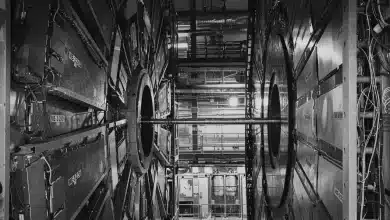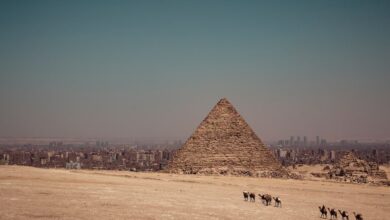The Architectural Marvels of Hagia Sophia
Hagia Sophia is one of the world’s greatest architectural achievements. It means “Holy Wisdom.” It is located in Istanbul, Turkey, today, and reflects an extensive history of religious and cultural transformation. Over the centuries, it has embodied multiple identities–Christian cathedral, Catholic church, mosque, museum, and now again a functioning mosque. The recent conversion of the museum into a mosque has ignited international debate. It highlights the political and symbolic importance of historical monuments and their changing roles in society.
The Hagia Sophia, originally constructed in the 4th Century as Constantinople’s main cathedral by Emperor Constantius 2, was destroyed twice by fire. Emperor Justinian rebuilt the Hagia Sophia in 537 CE to show off imperial power. It briefly became a Catholic Church during the Fourth Crusade before returning to Orthodox Control. Sultan Mehmet II, after the Ottoman conquest of 1453, converted it to a mosque. He preserved its original structure, while adding Islamic features, as a tribute to its architectural significance and cultural importance.

The Architectural Wonders of Hagia Sophia
Hagia Sophia is a stunning blend of Roman engineering with Byzantine artistic vision. The structure, which was commissioned by Emperor Justinian and completed in the year 537 CE to reflect the glory of the Byzantine Empire, was built under his direction. The central dome, which measures approximately 31 meters across, is its most iconic feature. It was an architectural feat of great proportions. It held the title as the largest dome in history for nearly 1,000 years. This influenced the construction of other monumental structures, such as the Florence Cathedral and Istanbul’s Blue Mosque.
Hagia Sophia’s interior is a visual feast shaped by centuries’ worth of artistry and devotion. A complex system of semi-domes and pendentives supports the vast interior, creating a light and airy atmosphere that draws your eye up to the heavens. The nave and galleries are lined with elegant marble columns imported from all over the ancient world. The dome is illuminated by dozens of small windows, which create a mystical glow that adds to the sacred nature of the building.
The walls and ceilings of the building were decorated with mosaics that depicted Christian figures, such as the Virgin Mary, Christ Pantocrator and archangels. Many of the mosaics were damaged during the conversion of the building into a Mosque in the 15th Century. However, a few remarkable examples have survived and been preserved. The mosaics reflect not only the Byzantine theological priorities but also the extraordinary craftsmanship of the artists. Hagia Sophia continues today to fascinate visitors with its architectural brilliance and rich historical legacy.

Construction at Hagia Sophia
Construction of Hagia Sophia began in 532 under the order of Emperor Justinian I, ruler of the Byzantine Empire. The monumental project, which was completed in only five years, in 537 AD, by two famous architects, Anthemius and Isidore, was led in part by Anthemius Tralles. They wanted to build a structure which would be superior in terms of size, beauty and spiritual grandeur.
The architects used cutting-edge engineering techniques to achieve this. The central dome was the most impressive innovation. It spans 31 meters (102 ft) and seems to float over the interior. They used a complex system that included pendentives and piers to support the architectural feat. The result was an interior with a large, open space that had never been seen before.
Inside and outside, the Hagia Sophia is richly decorated. The exterior of the Hagia Sophia featured marble columns, ornamental stonework and mosaics. Its interior was adorned with gold leaf and multicoloured marble panels. It was the largest cathedral of its time, and it held that title for over a thousand years.
The Architecture of Hagia Sophia
Hagia Sophia is a unique blend of Eastern and Western architecture, shaped over its 1,500-year history. The structure was originally built as a Byzantine Cathedral, and reflects both Roman engineering concepts and the spiritual symbolism in Eastern Orthodox design. The central dome is the most iconic feature, with its massive height of over 55 meters (182 feet). This was a revolutionary design at the time. It created a large, open space without the need for interior columns.
Interior is equally impressive. It’s filled with mosaics and marble inlays that have endured centuries of religious and political changes. Hagia Sophia has influenced many other buildings over the years, including Ottoman Mosques and modern churches. Its architectural innovations, particularly the use of pendentives to support a large dome, have had a lasting impact on both Islamic and Christian architecture.
Hagia Sophia is still awe-inspiring today, not just for its spiritual and historical significance, but also because of its architectural brilliance.

The Doors of Hagia Sophia
Imperial Door
Dating back to the 6th Century, the Imperial Door is the most important entrance at Hagia Sophia. This massive 7-meter-tall door is the passageway from the inner narthex into the main hall. The oak frame and bronze-plated wings of this massive door are covered in bronze plates. The door was reserved exclusively for the Emperor and his entourage. It symbolised imperial power and was an important ceremonial element at the Byzantine Court.
Beautiful Door
The oldest architectural element of Hagia Sophia is the Beautiful Door, which is located at the entrance to the inner narthex. It was part of a pagan Tarsus temple dating back to the 2nd Century BCE. Theophilos, the Emperor of 838, had it brought to Hagia Sophia. The bronze door is decorated with geometric reliefs and monograms and richly decorated in vegetal motifs and monograms. It reflects the incorporation of older religious traditions into the Byzantine Church.
Marble Door
The Marble Door separated the South Gallery from the West Gallery and marked the space that patriarchal officials used for religious meetings. One side of the marble door is a symbol for heaven, and the other represents hell. Hagia Sophia, which was the Imperial Church at that time, also served as a venue for important decisions made by the state on religious issues. Here, in 1166, Emperor Manuel Komnenos convened the Synod Assembly. In 1166, the Synod Assembly convened here under Emperor Manuel Komnenos.
Conclusion
Hagia Sophia is a testament to time and the merging of cultures. The architectural splendour of Hagia Sophia continues to inspire awe. It reflects the creativity of its creators as well as the rich history that once ruled it. Hagia Sophia, from its Byzantine origins to its transformation into an Ottoman Mosque and its current function as a working mosque with deep historic significance, embodies Istanbul’s complex and evolving identity.
Visitors who walk through the vast interior of the dome and look up at it are not just witnessing an engineering feat, but they’re also entering a story. Each column, mosaic and arch speaks of faith, power and cultural fusion. Hagia Sophia, more than just a monument, is a timeless icon of a city whose history and architecture meet. It invites all visitors to reflect on a world marked by continuity and change.




